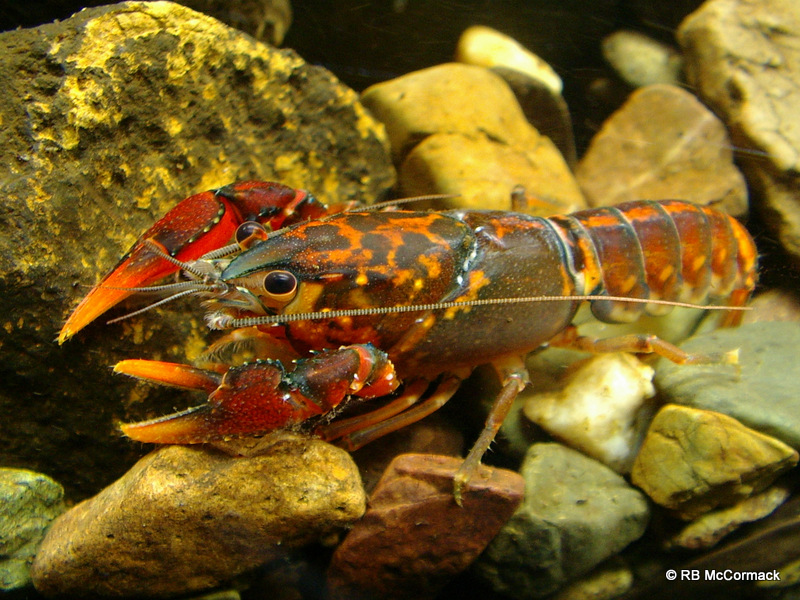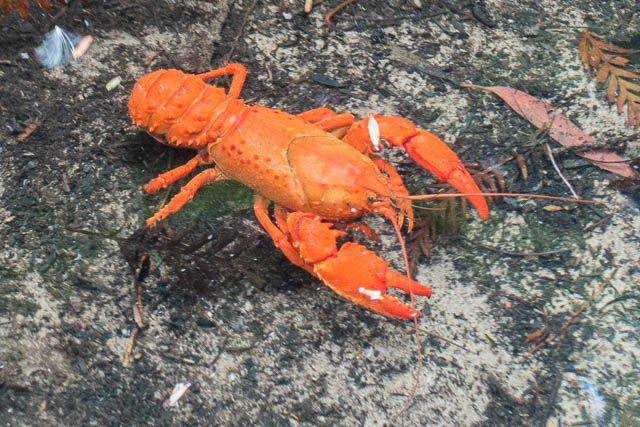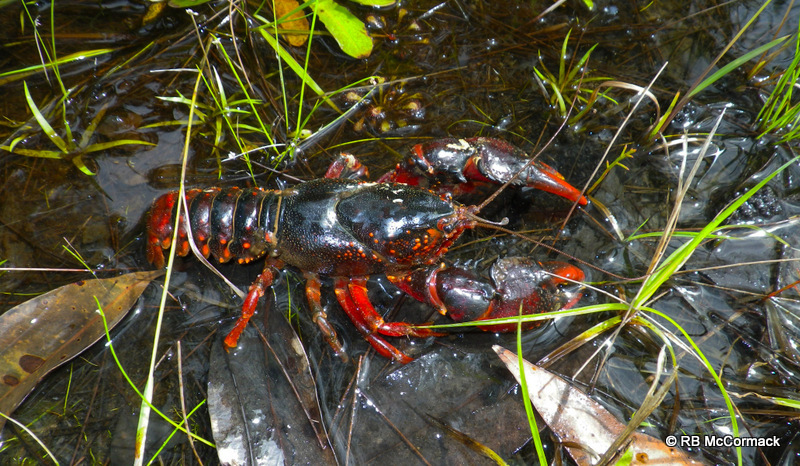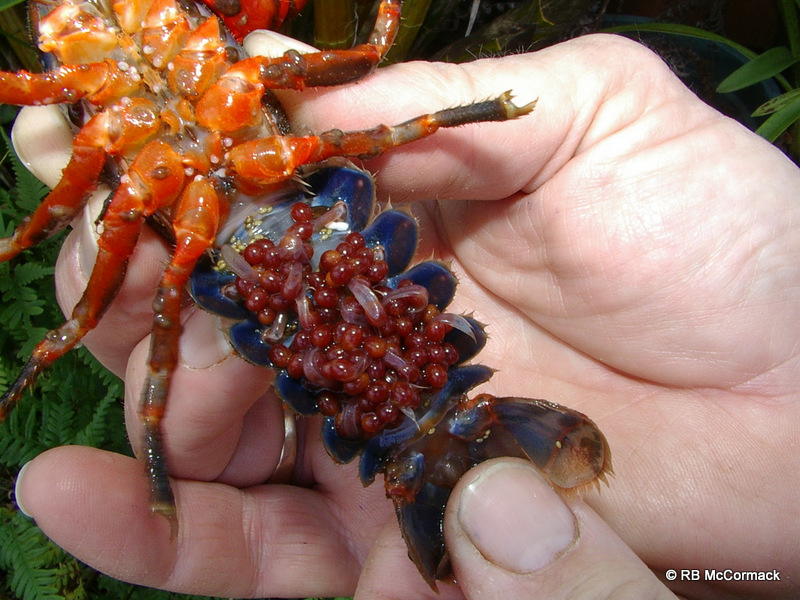The Sydney Spiny Crayfish, also known as the Blue Mountains Spiny Crayfish, Euastacus Australasiensis, or just spiny, is a native species to Australia.
The Sydney Spiny Crayfish are found extensively through the Blue Mountains.
What does it look like?
The Sydney Spiny Crayfish is a small, blackish to dark brown or maroon coloured crayfish with white spots scattered across its back. Some specimens are uniformly maroon in colour, others may have little to no white spotting. It has very small walking legs compared to other species of crayfish which can lead to people mistaking it for a juvenile of another species but it is in fact an adult Sydney spiny crayfish. They get their name from their defensive behaviour, they curl up into a ball when threatened.
This species is one of only three Euastacus that are native to New South Wales; these are commonly called ‘Spiny’ crays because they bear large long spines on their tail flaps as well as on their upper thorax.
A special variety is commonly known as the Lithgow Red. They are found higher up in the Blue Mountains and in the canyons around the Newnes Plateau.
Where does it live?
Sydney Spiny Crayfish are an intermediate group of crayfish that is shy and elusive, rarely being seen even when high populations are present. They are active both day and night, preferring clear water with gravel bottoms or pools with submerged rocks. Euastacus Australasiensis have a strong pair of pincers on their claws for defence which will expand up to 14cm in length. The female can grow over 30mm long while males can be just under 10mm long. Sydney Spiny Crayfish are one of many freshwater crustaceans found throughout Australia ranging from tropical regions to Tasmania’s south-west area.
They are scavengers foraging both in the streams and along the banks, are relatively nonaggressive to each other, both small and large crayfish will often live in close proximity. Breeding commences in May to June each year with relatively small broods of 100 to 150 crimson eggs.
Although they prefer cooler waters they do require oxygen which sometimes they won’t find it in stagnant waters if it gets too hot during summer months then these little creatures will migrate upstream where it has a less chance to dry out, because like all crustaceans need oxygen.
How can you help conserve it?
As with any threatened species, there are many ways you can help protect Euastacus Australasiensis. Being aware of its presence in local waters is a good start – by taking some time to spot it during your bushwalk, you can play an important role in helping identify new populations. And by reporting sightings to organizations like Sydney Catchment Authority (SCA) and National Parks & Wildlife Service (NPWS), these groups will be able to better manage these species. Report sightings here: https://www.inaturalist.org/observations/105619334
Although we still don’t know enough about where crayfish live or how they behave, one thing we do know for sure is that too much water gets pumped out of our streams. In particular, SCA currently takes close to 80% of available water out of every Sydney stream—making life increasingly hard for wildlife that rely on natural flows from creeks and aquifers; even introduced animals such as Blue Mountains Guppy require habitat that mimics their native waterways.
More info: https://www.dpi.nsw.gov.au/fishing/fish-species/species-list/spiny-crayfish
More info: https://austcray.com/the-sydney-spiny-crayfish-euastacus-australasiensis
![]()






